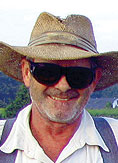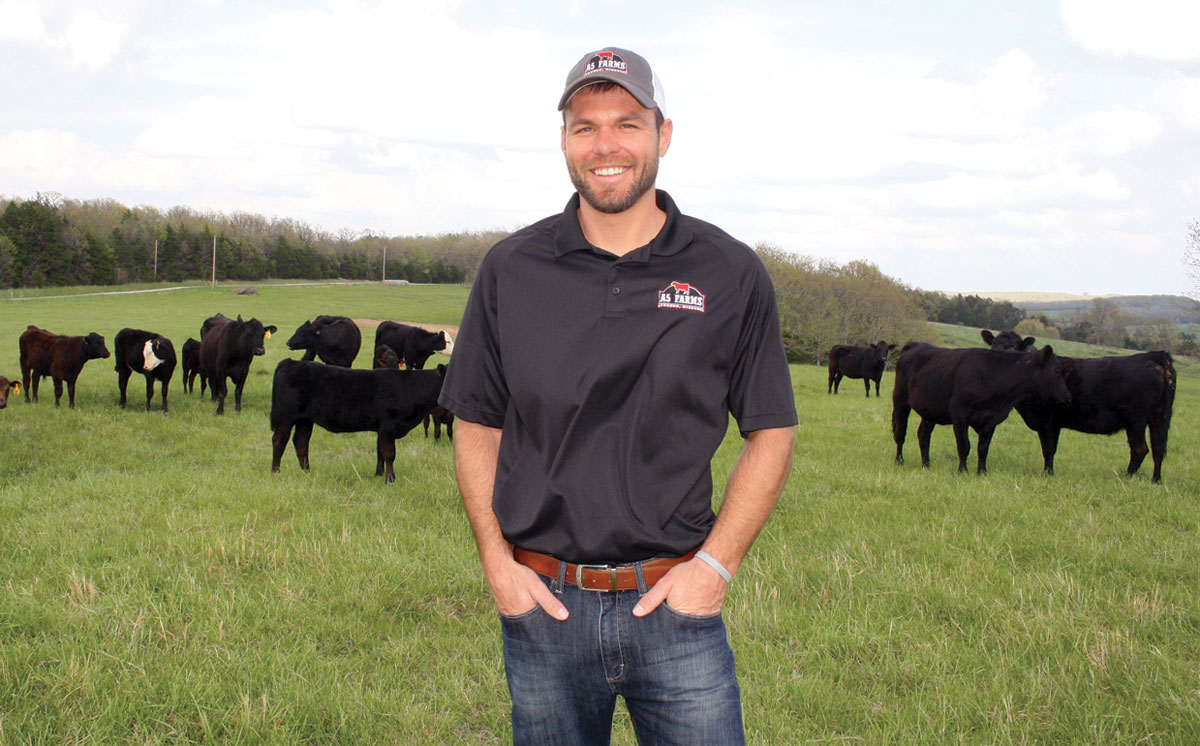
On his 170-acre farm, near Seymour, Mo., Randy Jenkins is growing hay in a different way – USDA certified hay.
Half of his farm is in Webster County and the other half in Wright County. Randy has 100 acres in hay, mainly red clover and grass.
“The third cutting will have a lot of lespedeza on dry years because I sowed lespedeza seed. There’s a lot of red top.” His fields usually produce 700 to 800 bales a year. They are 4-by-5 round bales, weighing about 850 pounds.
This summer, Randy entered the first-ever USDA certified organic hay in the Ozark Empire Fair Hay Show.
“My extension agent says I’m the only one he knows that grows completely organic hay,” Randy said. “As I was putting the hay into the Ozark Empire Fair, a livestock specialist was there and he said the same thing.”
One of the reasons he entered his hay into the fair was to develop a market for it. He won first place in his division, which was large, round bale grass/legume.
Having USDA certified hay is “not just hanging a shingle in front of your farm and saying ‘I’m an organic farmer,’” Randy said.
“You get inspected,” he explained. “Your records have to be kept up. They are inspected. Your farm is inspected, and if you’re doing any no-nos and get caught, you lose your certification.”
To become certified, a producer must get in touch with a certifier and learn from them what steps to go through.
“After everything is approved over the telephone and it looks good, you’ll have an on-sight inspector come and inspect your farm and then they’ll either approve it or disapprove. The certifier that I used was out of Lincoln, Neb.; a company called One Cert. But there are several companies that are qualified to certify you,” Randy said. “The reason I went organic is because I sowed red clover seed on my farm with a 75 percent cost share program, with the understanding that I would not use any chemical nitrogen fertilizer for seven years. I followed that practice.”
He has not used any chemical nitrate fertilizer since 1996.
“I’ve been farming a piece of ground now for 20 years that hasn’t seen any chemical nitrate fertilizer,” Randy said. “I clean out a lot of the litter from the grower house where a man raises laying hens; poultry litter. It’s a starter house. I like the starter house because it’s old oak sawdust rotted down with just enough chicken poo and baby chicken feed that the copper and magnesium and organic matter and enough chicken litter to break down the carbon and the sawdust that needs broke down. It actually makes the soil healthy. When I fertilize, I am not fertilizing my grass. I am fertilizing my soil. With a healthy soil, weed competition is less. Pest problems are less. Chemical nitrate problems are non-existent. I’m sold on organic.”
Randy admits it hasn’t always been a smooth road.
“I stumbled along with short yields for quite some time, until I got the soil built up,” he said.
He said that a wet summer “doesn’t really increase your volume all that much if you’ve got a good strong stand of red clover, red top and lespedeza.
“If your soil is healthy through the hot, dry years, you’ve got enough moisture content in your organic matter to compensate for the dry period.”
Randy added that he has seen improvements in his soil since following the organic path.
“If you use the organic practice, then those tiny little organic particles absorb moisture and loosen the soil and you have a more consistent volume from year to year over wet and dry periods.”
Randy is among the growing operations taking the organic route.
“As far as I know, the USDA certification for the farm is a pretty new thing. One of the things I would encourage other people to investigate would be the cost share program,” Randy said.
Randy believes there’s room in the beef industry for organic beef.
“Organic is kind of limited, but it’s a field I think everybody should pay more attention to,” he said.







